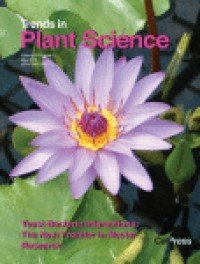Trends in Plant Science Q1 Unclaimed
Trends in Plant Science is the original and leading monthly review journal in plant science, featuring broad coverage of basic plant science, from molecular biology through to ecology. Succinct and readable reviews and opinions on basic research topics provide instant overviews of current thinking and new developments in plant biology. Aimed at researchers, students and teachers, our articles are always authoritative, and are written by both leaders in the field and rising stars. Articles for Trends in Plant Science are generally invited by the editor, but proposals for articles are welcome. It has an SJR impact factor of 3,297.
Trends in Plant Science focuses its scope in these topics and keywords: plant, evolutionary, plants, arabidopsisdesigner, arabinogalactanproteins, bill’allelopathic, chaperones, choice, cleomaceae, context, ...
Type: Journal
Type of Copyright:
Languages: English
Open Access Policy: Open Choice
Type of publications:
Publication frecuency: -


- €
Inmediate OANPD
Embargoed OA0 €
Non OAMetrics
3,297
SJR Impact factor325
H Index198
Total Docs (Last Year)481
Total Docs (3 years)11195
Total Refs5583
Total Cites (3 years)458
Citable Docs (3 years)11.25
Cites/Doc (2 years)56.54
Ref/DocOther journals with similar parameters
Annual Review of Plant Biology Q1
Fungal Diversity Q1
Molecular Plant Q1
Nature Plants Q1
Annual Review of Phytopathology Q1
Compare this journals
Aims and Scope
Best articles by citations
Reactive oxygen gene network of plants
The rhizosphere microbiome and plant health
Antioxidant properties of phenolic compounds
GATEWAY™ vectors for Agrobacterium-mediated plant transformation
MYB transcription factors in Arabidopsis
The WRKY superfamily of plant transcription factors
Role of plant heat-shock proteins and molecular chaperones in the abiotic stress response
WRKY transcription factors
ROS signaling: the new wave?
Cold stress regulation of gene expression in plants
Plant phenotypic plasticity in a changing climate
bZIP transcription factors in Arabidopsis
Rhizosphere bacteria help plants tolerate abiotic stress
The role of xanthophyll cycle carotenoids in the protection of photosynthesis
Flavonoids: a colorful model for the regulation and evolution of biochemical pathways
Plant salt-tolerance mechanisms
Phenomics – technologies to relieve the phenotyping bottleneck
Field high-throughput phenotyping: the new crop breeding frontier

Comments